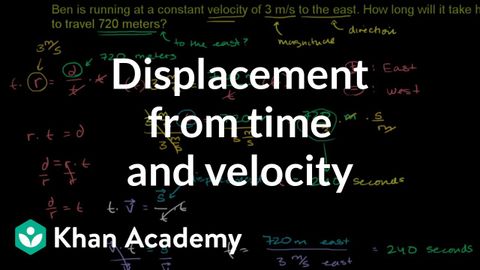
Subtitles & vocabulary
Displacement from time and velocity example | One-dimensional motion | Physics | Khan Academy
00
楊凱翔 posted on 2016/10/21Save
Video vocabulary
minute
US /ˈmɪnɪt/
・
UK /'mɪnɪt/
- Countable Noun
- Notes taken at a meeting to record what was said
- Short period of time
- Transitive Verb
- To record in writing what is said at a meeting
A1TOEIC
More time
US /taɪm/
・
UK /taɪm/
- Uncountable Noun
- Speed at which music is played; tempo
- Point as shown on a clock, e.g. 3 p.m
- Transitive Verb
- To check speed at which music is performed
- To choose a specific moment to do something
A1TOEIC
More change
US /tʃendʒ/
・
UK /tʃeɪndʒ/
- Transitive Verb
- To exchange one set of clothes for another
- To exchange one kind of money for another
- Noun (Countable/Uncountable)
- Exchange of one set of clothes for another
- Money in the form of coins instead of paper
A1
More travel
US /ˈtrævəl/
・
UK /ˈtrævl/
- Intransitive Verb
- To go to a place that is far away
- To move or be transmitted.
- Noun (Countable/Uncountable)
- Going to other places, esp. distant places
- The distance covered in a journey.
A1TOEIC
More Use Energy
Unlock All Vocabulary
Unlock pronunciation, explanations, and filters
